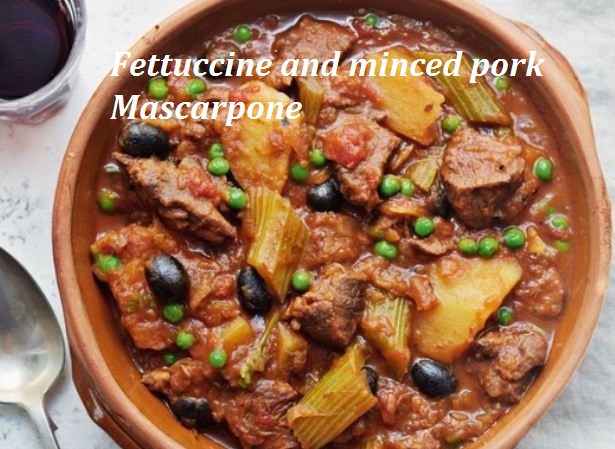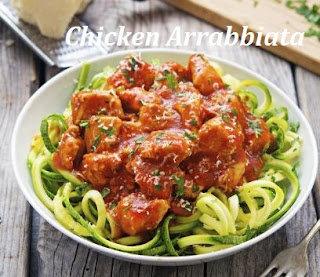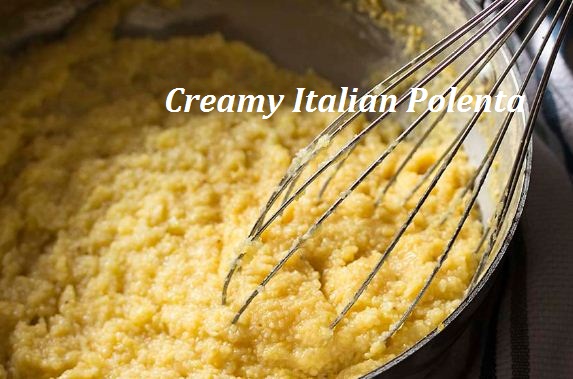8 Most Poplar and Famous Foods in Italy
8 Most Poplar and Famous Foods in Italy
The most troublesome thing about eating in Italy is that you can't have a go at everything. Consistently you have a limited number of dinners, and a limited measure of room in your stomach, while there appear to be an unending number of Italian dishes that you "completely need to attempt". From local claims to fame to the best regular indulgences, you would require different lifetimes to test all the best Italian nourishment, and that is before you even think about pastry and beverages. Before you begin to freeze, we've concocted a little can rundown of Italian nourishments for you to take a stab at your excursion. This is anything but a best of, and it's unquestionably not comprehensive – for one thing, we've maintained a strategic distance from the subject of relieved meats and cheeses since they are universes unto themselves – yet on it are the dishes that we figure everyone should attempt at any rate once when they visit Italy. Taken together, they summarize the substance of the different cooking conventions that exist around the nation. On the off chance that we've missed your preferred dish, and we're certain there are a couple of them, kindly let us know in the remarks.
In spite of the fact that a chunk of level bread presented with oil and flavors was around well before the unification Italy, there's maybe no dish that is as normal or as illustrative of the nation as the unassuming pizza. Simple, modest, and filling, pizza has for quite some time been a typical tidbit or feast, especially in Naples where tomato sauce was first included. At the point when the Italian Queen Margherita got through the clamoring city on a voyage through her realm in 1889 she requested to attempt this dish she saw such huge numbers of her subjects eating. A nearby business visionary served her the now incredible mix of tomato sauce, mozzarella, and basil, making (or more likely, marking) the Margherita pizza. Regardless of whether unintentionally or plan, the Margherita likewise shows the shades of the Italian banner.
1 Pizza
Today, there are essentially two kinds of pizza to look over in Italy: Neopolitan-style pizza, or Roman-style pizza (however frankly, numerous conveyance places exist that is a fair compromise between the two). Neapolitan-style pizza has a thick, feathery hull. It will in general be somewhat smaller in breadth on the grounds that the batter hasn't been turned out as far and it's more filling. Roman-style pizza is has a paper-meager covering and simply the scarcest crunch (you don't need it to be saturated!) It's bigger in width however typically lighter and to a lesser extent a gluten bomb.
As a result of Naples' history with Queen Margherita, the city professes to be the origination of present day pizza, in spite of the fact that the fact is bantered all through Italy. Whatever the case might be, the general standard for requesting pizza in Italy is to go for less garnishes. You ought to likewise be suspicious of any pizza shops that heap the garnishes onto their pies – this can frequently be a strategy used to conceal the utilization of poor fixings. Less garnishes are an indication of trust in the item in light of the fact that each fixing must be model. Whichever pizza you may support, the other general guideline is: When in Rome, do as the Romans do, i.e., eat Roman style pizza. When in Naples, naturally, do as the Neapolitans do.
2. Bottarga
Smoked eggs from the rodent of the ocean. Pause, what? Try not to be put off by this unpleasant depiction on an Italian delicacy in light of the fact that the other method to portray bottarga is "Sicilian Caviar". In August and September southern Italians take the roe from dim mullets, salt it, press it, and afterward leave it to air dry for a half year. The outcome is a strong hunk of eggs the shade of golden and blood oranges that, when cut and eaten or ground over pasta, blooms into a greatly exquisite, smoky, and briny bunch. Despite the fact that essentially a poor man's response to saving fish in the prior days refrigeration, it is currently viewed as one of the most looked for after and sumptuous staples in Italy, straight up there with truffles (more on those later). We suggest it ground over pasta, or just cut meagerly and sprinkled with lemon juice and olive oil.
3. Lasagna
A well-made lasagna | Photo by Mike Easton of ilcorvopasta.com/A great lasagna requires commendable pasta, ragu and bechamel. | Photo by Mike Easton of ilcorvopasta.com/
Lasagna is a wide, level pasta noodle, usually prepared in layers in the broiler. Like most Italian dishes, its starting points are fervently challenged, however we can at any rate say that is its fortress is in the locale of Emilia-Romagna, where it changed from a poor man's nourishment to a rich supper loaded up with the ragù, or meat sauce.
Traditionally lasagna wasn't made with tomatoes (recollect, those came over from the New World in the sixteenth century); just ragù, béchamel sauce, and cheddar, usually mozzarella or Parmigiano Reggiano or a blend of the two. Indeed, even today, just a touch of tomato or tomato sauce is utilized in a customary ragu, not at all like most Italian-American dishes, which are basically swimming in tomato sauce. This thinks the kind of the meat however here and there is a bit of jostling for American palates.
Despite the fact that you can discover lasagna all through all of Italy, there's in no way like difficult the healthy dish in Emilia Romagna with hand crafted noodles, new ragù, and a liberal spot of provincial pride
On the off chance that you need to reproduce the flavorful dish at home you can look at our lasagna formula.
4. Fiorentina Steak
Florentine T-bone steak, a specific dish of FlorenceFlorentine T-bone steak, or bistecca fiorentina, is an adored dish all around Tuscany.
A bistecca fiorentina, or Florentine T-bone steak, covers all of the attributes of Italy's best dishes: a particular cut of meat from a particular cow arranged in an unmistakable manner all inside the limits of a particular district.
On account of the huge bistecca fiorentina, it's a T-bone steak cut thick (at any rate 5 centimeters) from the flank of a Chianina bovine brought up in Tuscany. It's cooked for 5 to 7 minutes on each side, contingent upon the thickness, until the outside is cooked and within stays extremely uncommon. No sense in requesting a medium-very much done steak here, the meat is too thick to even think about evening consider it!
In spite of all the doctrine, there are a few minor departure from the Florentine steak. For one, the meat isn't generally from a Chianina bovine nowadays. Numerous Florentines approve of the expansion of new breeds however others swear that the huge size and muscle of the Chianina makes for the best t-bones. If all else fails, basically inquire. Additionally, the Florentines will in general lean toward the higher cuts, closer to the rib confine, which contain the filet known as bistecca nella costola, while past Florence in Tuscany you'll likely get a bistecca nel filetto, a lower slice that will in general be smooth and more soften in-your-mouth. That doesn't really mean it's the better, however. The Florentines contend that the bistecca nella costola originates from a more utilized muscle, which means it's more delightful.
Whichever cut you get, this is a dish to be eaten solely in Tuscany – either in Florence or the open country. It's likewise intended to be shared! When requesting, recollect that bistecca alla fiorentina is estimated by weight; for two individuals you're typically taking a gander at 1-2 kg (or about 2-4 pounds).
5. Ribollita
While on the point of Tuscany, we would be delinquent on the off chance that we didn't make reference to this healthy soup which has become so famous Campbells makes a (not astounding) rendition. With establishes in the worker cooking of the area, this vegetable soup is thickened with bread rather than meat, since that is what was less expensive and more promptly accessible for many years in the frantically poor Italian open country. In Tuscany, the dish is viewed as an extraordinary treat in the fall, when the flavor of the collect vegetables is at its generally energetic and the soup detonates with an exceptional appetizing quality in spite of the nonappearance of meat (at any rate in the customary renditions). Regularly eaten as a first course rather than pasta in the trattorie of Florence, this is one generous stew that shows off the tremendous, and frequently undiscovered intensity of incredible produce.
6. Polenta
In spite of the fact that we will in general partner pasta with all of Italy, in all actuality until reasonably as of late, the staple starch eaten in the northern pieces of the boot was polenta. This corn mush, which is almost indistinguishable from the corn meal eaten in the southern conditions of America (varieties are down to the coarseness or fineness with which the pieces of corn are ground), was originally produced using anything that starches were convenient, including oak seeds and buckwheat. In any case, the acquaintance of corn with Europe in the sixteenth century saw it become the prevailing element of polenta. Despite the fact that it does not have the decent variety in shapes and surfaces that pasta has, polenta is the ideal backup to a wide scope of meats, especially stewed meats, and it is ostensibly one of the most ameliorating nourishments you can eat when the temperatures drop in urban areas like Milan, Turin, and Venice. Search for it as a mush, or stuffed and singed into unbalanced misuses. You ought to likewise not miss it in the following dish…
7. Ossobuco
ossobucoOssobucco alla milanese on a fragrant hill of risotto alla milanese is the most great dish you can eat in Milan.
The world-well known ossobuco alla milanese is a bone-in veal shank, cooked low and slow until meltingly delicate in a soup of meat stock, white wine, and veggies. Traditionally, it's joined by a gremolata (lemon get-up-and-go, garlic, and parsley) yet that is discretionary. In spite of the fact that the Milanese like to guarantee this substantial perfect work of art there are the same number of renditions of it as there are nonnas in Lombardy, which is known for generous, regularly provincial dishes that are great at covering the ribs and fighting off the winter chill. Regardless of the ubiquity of ossobuco (which literally signifies 'empty bone'), it's not constantly normal to see it on eatery menus since it needs around three hours of cooking time. In the event that you do get an opportunity to eat it in a café or home, or even to cook it yourself, you should seize the chance. It's usually joined by polenta or the following thing on our rundown.






Comments
Post a Comment